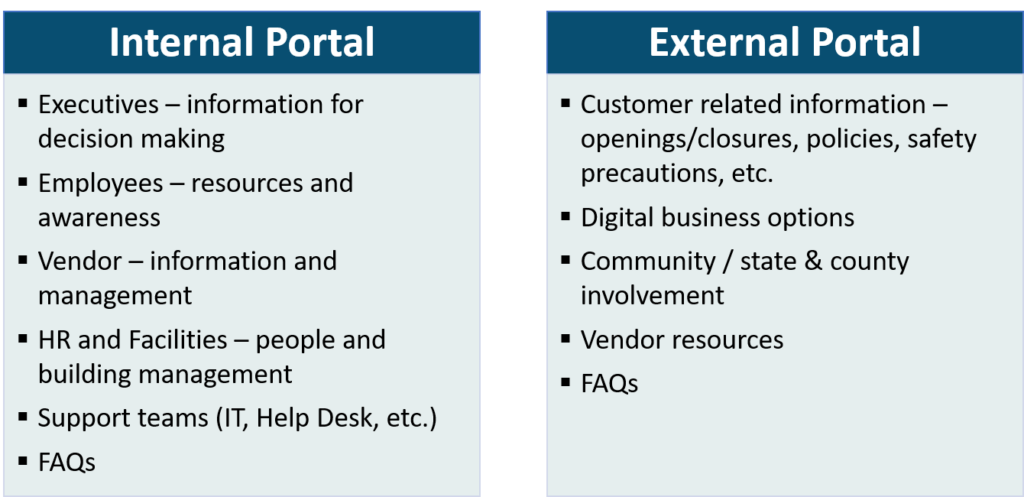Enhancing Provider Experience Using AI
An often overlooked metric, Provider Experience is critical to the healthcare ecosystem because it directly impacts Patient Experience. AI can help.
Read More About Enhancing Provider Experience Using AI
Digitally connect operations to COVID management for safety, efficiency and continued success

Authors: Lori Tobin
As organizations plan for workforce re-entry into the office environment, a well-designed and integrated digital “readiness management” platform can better enable and expedite these efforts – while keeping safety top of mind. These digital platforms, when designed to connect business and IT operations with COVID management, can help protect the workforce, keep customers informed, and manage the complexities and nuances of employee re-entry.
According to a recent Gartner survey, over 40% of corporate executives expect social distancing guidelines to be utilized in the workplace for one year, while another 40% anticipate the same guidelines will be required for up to two years. In addition, it is very possible that restrictions may have to be re-implemented once relaxed, making an integrated digital platform more critical for standardized and centralized communications. As businesses develop and execute their return to workplace plans, they are faced with managing many aspects of an increasingly remote enterprise:
During this time, businesses also need to be proactive and anticipate changes in customer interactions, managing the customer experience, and understanding their impact on local communities.
A well-designed “readiness management” digital platform should consider the following structure and components:
We recommend beginning by identifying specific requirements and designs for your digital platform. This is best done by conducting a quick assessment to understand your specific needs, current technical components and data availability, and optimal future solution. While much of this analysis will likely focus on integration with key internal systems, a web application or portal with a secure public port or domain for customers and vendors is also a critical component. Another key aspect of such a solution is an integration layer with APIs to pull CDC and state or county COVID-related orders, data and reports, giving executives and employees a single place to find the latest information. As with any digital platform, security and data privacy (IAM, certificates, authentication, GDPR/CCPA adherence, etc.) should also be a key focus.
A digital platform can greatly enhance business response and facilitate operations so that businesses can better focus on employee engagement and customer experience under the new normal. The objective should be a comprehensive digital solution that provides visibility and transparency into return to workplace plans for all stakeholders. Is your organization prepared to excel in this new environment while keeping employees and customers safe and informed?
Steve Idowu and Lori Tobin have a depth of experience delivering digital solutions to solve a litany of challenges, including getting back to work safely during the COVID pandemic.
Get the latest updates and Insights from RevGen delivered straight to your inbox.